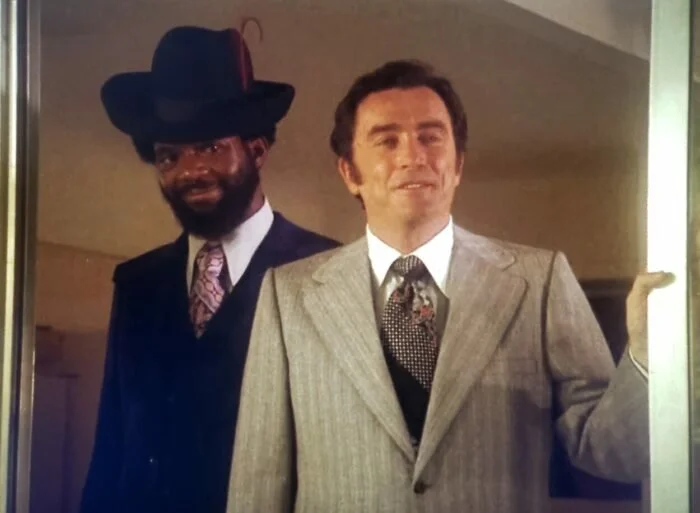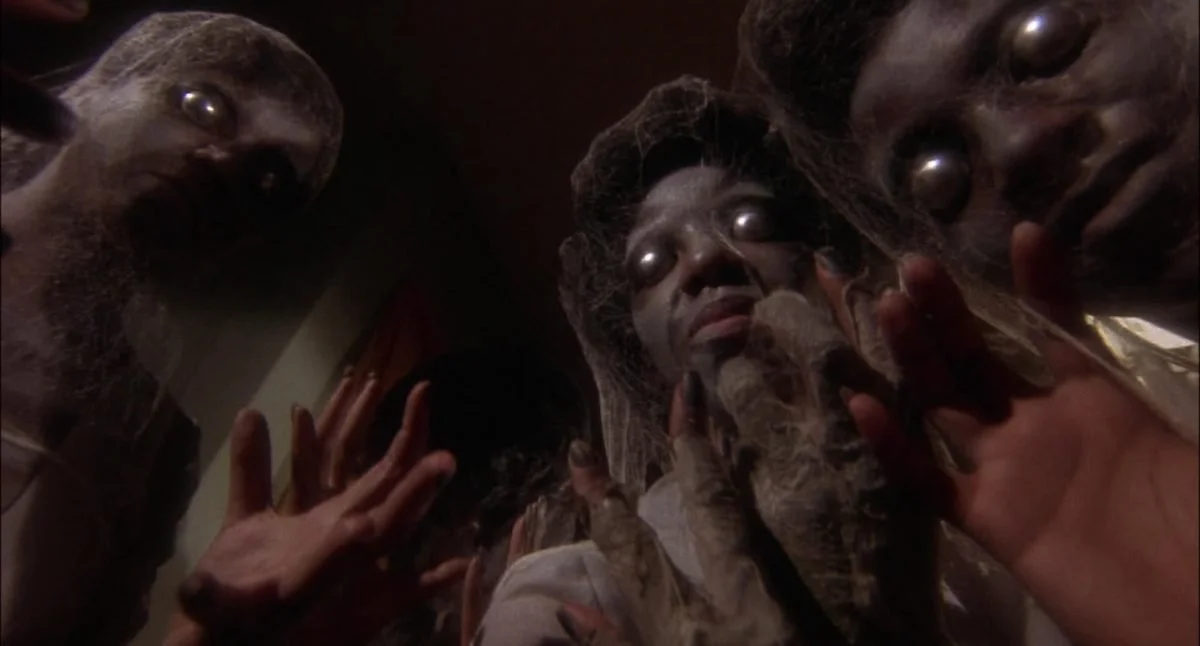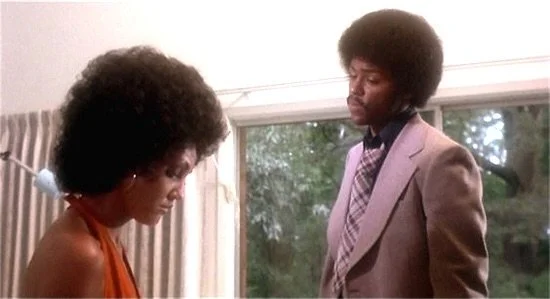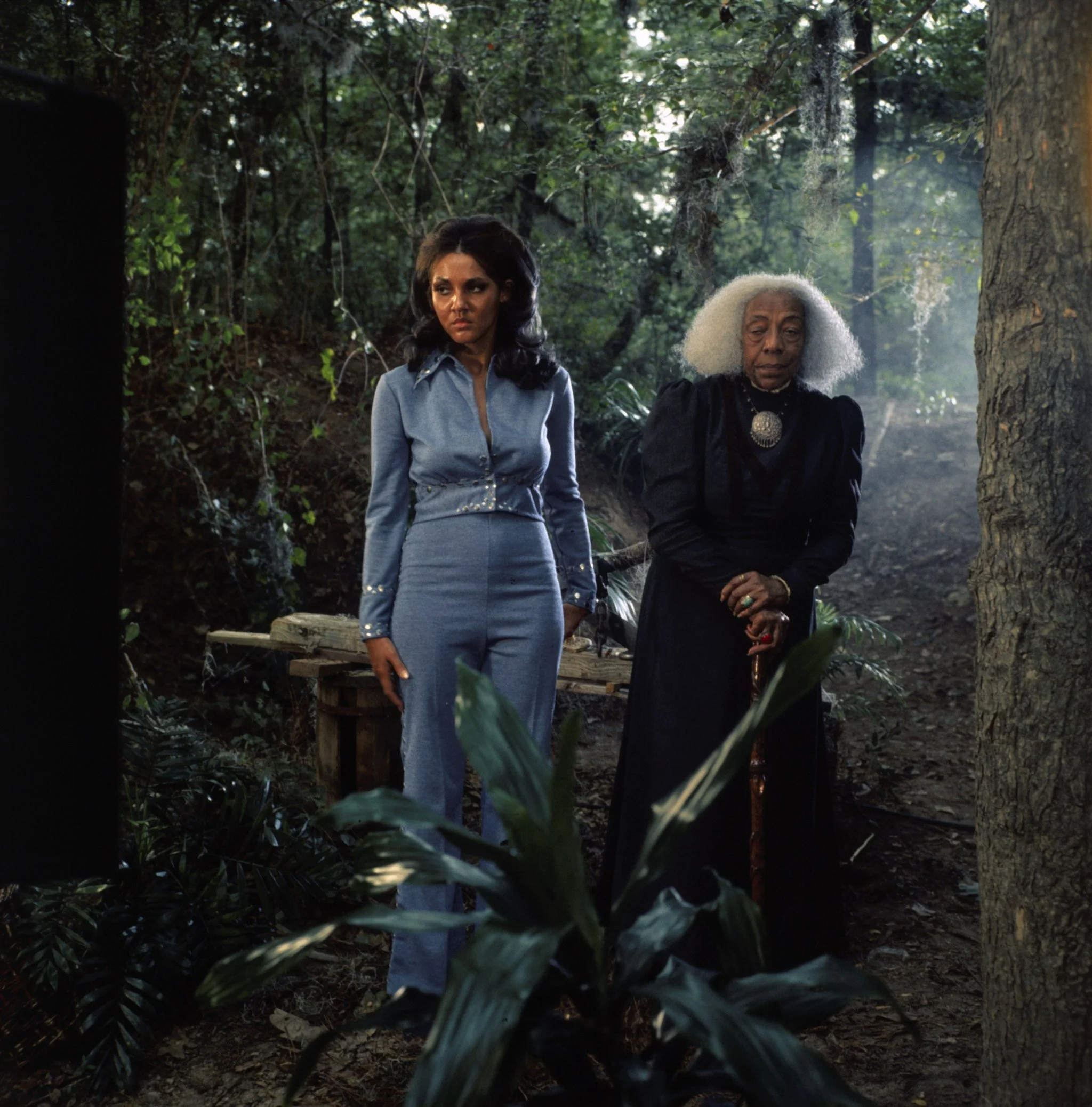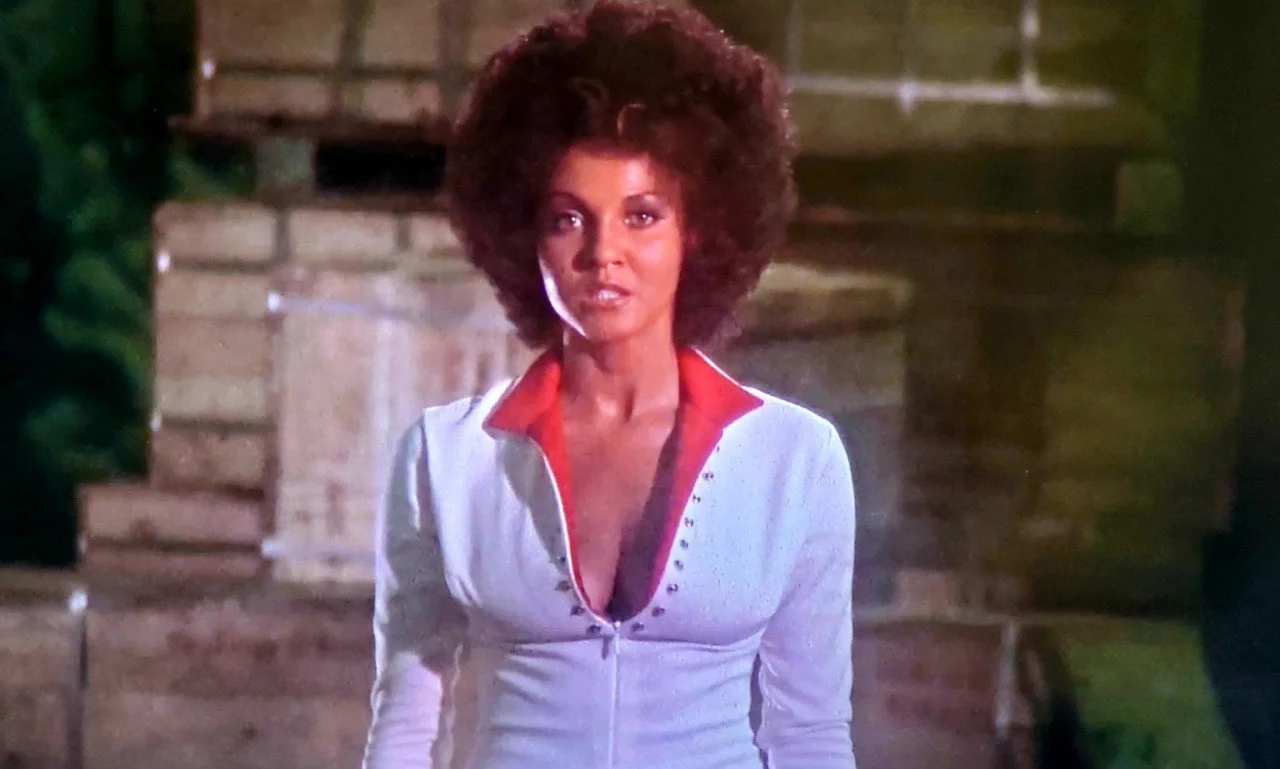Sugar Hill: Still Sweet
Cinematic Semicentennial Series – 1974 Edition
Poster for Sugar Hill
Mama Maitresse: “How strong is your hate?”
Sugar: “As strong as my love was, my hate is stronger.”
This edition of the Cinematic Semicentennial Series takes us to the genre-straddling exploitation film Sugar Hill. It is part vigilante crime story, part supernatural horror movie, part zombie film, part Blaxploitation cinema, and a whole lotta fun. Let’s jump right in.
Hell-to-Pay
We open in the deep south of the United States. While never stated outright, our setting is likely somewhere in Louisiana. Langston, the owner of the popular nightclub “Club Haiti” is brutally beaten to death after refusing to sell his joint to a former business partner and local mob boss by the name of Morgan (Robert Quarry). Langston’s fiancée Diana “Sugar” Hill (Marki Bey), a stylish fashion photographer who is clearly devoted to and deeply in love with Langston, is now bent on meting out some righteous vengeance for his murder.
Meanwhile, Morgan and his cronies—smug and overconfident after dispatching Langston—believe that getting Sugar to sell the club will be a breeze. Hubristic baddies don’t usually fare well in these types of films and Sugar Hill is no exception. In a scene that follows Langston’s murder, Morgan is holding court in his lounge as his crew kicks back. They are in a celebratory mood, gleefully tossing around racist slurs, and are particularly pleased that they have taken out a Black businessman.
Morgan and his #2, Fabulous
The leader of Morgan’s goon squad of white men is a Black man who goes by the name of Fabulous (Charles Robinson). While seemingly in a position of power as head of Morgan’s gang, Fabulous is in fact anything but powerful; we constantly watch him do Morgan’s bidding dutifully and in one jarring instance we see him cleaning off Morgan’s soiled white shoes. As if to put an even finer point on it, Morgan looks over and says “Come on Fabulous. You can do better that that. I’ll make an honest Negra outta you yet.” Suffice to say the filmmakers really wanted hammer home that Morgan is our villain.
All sunshine and smiles, Sugar soon comes to meet Morgan at his place to talk about the possibility of selling the club. Morgan is entranced by Sugar’s style and grace, completely naive to the fact that she has a different plan—a very different plan.
“Awake!”
Not long after this meeting, we are treated to one of the film’s stand-out sequences as Sugar traverses the deep swamps to enlist the help of Mama Maitresse (Zara Cully), a semi-retired Voodoo Priestess, to call on the powers of the underworld and exact Sugar’s revenge. Mama summons the Voodoo god Baron Samedi, played with great panache by Don Pedro Colle. He is only too happy to loan Sugar his army of the undead. The Baron bellows in a powerful and resonant voice:
“Awake! All here who are pledged to obey the will of Baron Samedi, slave and master, master and slave, awake!”
The army of the undead slowly begins to rise. We get our first look at the zombies, breaking through the ground with silver orb-like eyes and bodies draped in cobwebs. Some of the zombies are adorned with shackles and brandish machetes. A few even wear mischievous grins on their faces, which is effectively creepy. We come to understand that these zombies are in fact former slaves who succumbed to disease on a 19th-Century voyage from Guinea to the southern United States and were subsequently buried in the area’s swamps.
Sugar, the Baron, and the zombies set out to destroy each member of Morgan’s gang through various grisly, and sometimes creative, methods. The most memorable kill involves a pig farm and one of the most quoted and impeccably delivered lines from the movie: “I hope they’re into white trash.” (Right on Sugar—so good!)
Meanwhile the plot thickens with the arrival of Lieutenant Valentine (Richard Lawson), a police detective investigating the seemingly ritualistic-type killings of Morgan’s crew; he also happens to be Sugar’s ex-boyfriend. Sugar keeps up pretenses by continuing her photography gigs and feigning interest in selling Club Haiti to Morgan. She is equal parts charming and coy with Valentine even as his suspicions about her involvement in the killings are heightened.
Will Sugar stay out of the crosshairs of local law enforcement and survive retaliation from Morgan long enough to take her take her mission of vengeance all the way to the top?
Valentine trying to get a read on Sugar
My two cents
While I know very little about Voodoo, I think it’s safe to say that its representation in Hollywood in many instances is at best inaccurate and at worst highly problematic with its stereotypes of race, religion, and culture. In terms of Sugar Hill’s authenticity when it comes to Afro-Caribbean spiritual and cultural traditions, that’s not something I’m qualified to weigh in on though I must imagine some creative liberties were taken. This an exploitation film after all, so a tempering of expectations must come with the territory.
Viewers not familiar with Blaxploitation films of the early-to-mid 1970s may find the racist and belittling language used by some of the characters to be jarring. That said, the language serves the story and rounds out the profile of our villains, including the odious Morgan, his goonish crew, and his virulently racist girlfriend Celeste (Betty Anne Ress)—yeah, she’s a real charmer.
Sugar Hill is an unfussy straightforward revenge tale delivered in a neat B-movie package. Despite some dramatic moments that don’t necessarily land and a couple of rather lackluster action scenes, there is a lot to enjoy here.
Sugar and Mama
Marki Bey’s performance as Sugar is solid, particularly once her mission of revenge begins. Her outward persona shifts based on what each situation requires. Sugar skillfully negotiates gangsters, henchman, the police, the Baron, and her zombie hit squad. She can be charming, clever, vulnerable, glamorous, and deadly serious with lots of agency at her back. And she does it all with sharp, iconic style; perhaps most memorable is her white and red jump suit that she dons when confronting her adversaries with her zombie hit squad in tow. She is a badass dressed to kill in more ways than one.
Of course for Black actresses working in the Blaxploitation era, it was nearly impossible to avoid comparisons to Pam Grier. Grier had reached absolute icon status by this time, so female leads in these films had their work cut out for them. With that in mind, I think Marki Bey holds her own here. The Philadelphia-born Bey did a good bit of TV work throughout the 1970s and into the early 80s, with a recurring role on Starsky and Hutch, after which she seems to have phased out of acting. Once the Blaxploitation period ended, significant roles for Black actors and actresses were hard to come by. I’m not sure if that’s why Bey fell off the scene or if it was for completely unrelated reasons.
Sugar means business
Baron Samedi also makes quite the impression, cutting an imposing figure with his huge frame and decked out in in full zombie king regalia. Don Pedro Colley is fully committed here and plays the part with gusto as he alternates between a sly grin and a wild, gleeful smile showcasing a set of gold teeth. Samedi’s grand flourishes and booming laugh are a treat. I got a kick out of watching the Baron and Sugar manipulate Morgan and his crew by playing up racial and gender stereotypes to their decided advantage.
As mentioned earlier, the aesthetic of the avenging zombies here is striking and quite unique for this subgenre. Fun fact: the protruding eyes of the zombies in this film were actually ping pong balls painted silver; this is a good example of the kind of budget-friendly, creative DIY filmmaking I love. The whole atmosphere surrounding the rising undead army sequence is wonderful, complemented by a rhythmic percussion score, lightning flashes and thunder claps, and a forest engulfed in a low hanging mist. Again this could not have been too expensive to film but it is so effective. The creators of Sugar Hill, no doubt working with a small budget, did well to deliver an entertaining film while resisting the temptation to overshoot on limited resources and a truncated filming schedule. While there are several ostensibly violent sequences, much of them occur off screen with minimal blood and gore. Considering the subject matter, the content here is pretty tame by today’s standards.
The film also features a killer theme song, “Supernatural Voodoo Woman” by The Originals, which takes us in and out of the film. Have a listen below. The Blaxploitation era produced lots of great music but my favorite has to be the original soundtrack for Blacula (1972), which features a series of impossibly funky tracks. But be warned that if you are walking as you listen to these songs you just might find yourself striding or strutting to the infectious groove.
Sugar Hill at 50
We have discussed in a previous post that most zombie films generally fall into one of two instructive, if imprecise, categories: your voodoo zombies and your cannibal zombies. The former featured zombies that functioned at the behest of a villainous mastermind. These include White Zombie (1932), I Walked with a Zombie (1943), and The Plague of Zombies (1966).
Then comes 1968, a stellar year in horror and sci fi cinema, and the release of Night of the Living Dead (NLD). George Romero’s flesh-eating zombies would become the template for most future zombie films. I say most because while this conception of zombies began with NLD, the trend didn’t truly solidify until films like the Romero sequels Dawn of the Dead (1978) and Day of the Dead (1985) and Lucio Fulci’s Zombie (1979) sealed the deal. Horror-comedies such as Return of the Living Dead (1985) and Shaun of the Dead (2004) took a playful approach to the zombie subgenre. And of course the long-running breakout series The Walking Dead did much to cement the “zombie-as-cannibal” trope for contemporary audiences, particularly for more casual viewers and even non-horror fans.
This does not account for The Living Dead at Manchester Morgue, a European-produced zombie film in the Romero tradition released the same year as Sugar Hill. I only recently discovered that movie thanks to The Last Drive-in with Joe Bob Briggs. It’s a film definitely worth checking out.
Sugar Hill is a throwback (of sorts) to the pre-Romero voodoo zombie films and serves as a fascinating time capsule within the relatively small window of Blaxploitation and Blaxploitation horror in particular. Opening in the winter of 1974, the film performed poorly at the box office and failed to make back its budget. Over time Sugar Hill has developed a respectable cult following. However, while the film is fairly well known to fans of these subgenres it remains relatively obscure to general audiences. I am more than happy to get the word out here.
Did you know?
Richard Lawson’s genre credits also include Scream Blacula Scream (1973) and Poltergeist (1982). The Kino Lorber bluray includes an interesting interview with Lawson where he talks about working in Blaxploitation. He discusses the fact most of the writers, directors , and producers of the Blaxploitation era were actually white. This had obvious implications for creative ownership, experience, and representation. He added that he was thankful to have the work, which gave him and other Black actors an opportunity to hone their craft, learn the business, and “take a system and make it work for [them].”
This is the only film Paul Maslansky directed, though he was a busy producer with many credits under his belt including all the Police academy movies; take that how you will.
Don Pedro Colley can be seen other genre films of the 1970s including Beneath the Planet of the Apes (1970) and THX1138 (1971), in addition to appearing in an episode of Night Gallery.
The stock jungle sound effects used when Sugar is searching for Mama Maitresse in the swamp are instantly recognizable to anyone who watched TV back in the 1970s and 80s. It brought me back!
Robert Quarry, who plays an effectively sleazy villain in Morgan, appeared in several horror films of the early-to-mid 1970s including Count Yorga: Vampire (1970), The Return of Count Yorga (1971), Deathmaster (1972), and Dr. Phibes Rises Again (1972).
Sugar Hill was produced and distributed by American International Pictures (AIP). AIP, an acronym revered by many a classic B-movie aficionado, already had success with Blaxploitation-era horror films, most famously Blacula (1972) and Scream, Blacula, Scream (1973)—we’ll be discussing these down the road.
The film was shot in Houston, Texas. We are treated to an establishing shot of the Voodoo History Museum, which is actually the Heights Branch of the Houston Public Library, a registered historical landmark.
There is another film that shares the title of Sugar Hill, a 1993 crime thriller starring Wesley Snipes. It has no connection to the 1974 film.
How did I watch?
Kino Lorber Blu-ray
Cast (abridged)
Marki Bey – Diana “Sugar” Hill
Don Pedro Colley – Baron Samedi
Zarra Cully – Mama Maitresse
Robert Quarry – Morgan
Charles Robinson – Fabulous
Richard Lawson – Valentine
Betty Anne Rees – Celeste
Crew (abridged)
Director – Paul Maslansky
Producers – Elliott Shick and Samuel E. Zarkoff
Music – Nick Zesses and Dino Fekaris
Cinematographer - Richard Jessup
Screenwriter – Tim Kelly
Production and Distribution Company – American International Pictures
Cinematography – Robert C. Jessup
Makeup – Hank Edds
Special Effects – Roy L. Downey
Running Time: 1h 31m
MPAA Rating: PG
Recommendations based on Sugar Hill
White Zombie (1932)
Plague of Zombies (1966)
Blacula (1972)
Foxy Brown (1974)
Supplemental Recommendations-
Is that Black Enough for You?!? (documentary streaming on Netflix)
Horror Noire: A History of Black Horror (Shudder original documentary currently streaming)
My good friends (Jeff Owens & Richard Chamberlain) over at the Classic Horrors Club podcast covered Sugar Hill as part of a Halloween-themed season back in October of 2023. It’s a very fun discussion featuring special guest and creative Dominique Lamssies. You can check it out on soundcloud, Apple podcasts, Spotify, and wherever fine podcasts can be found.



